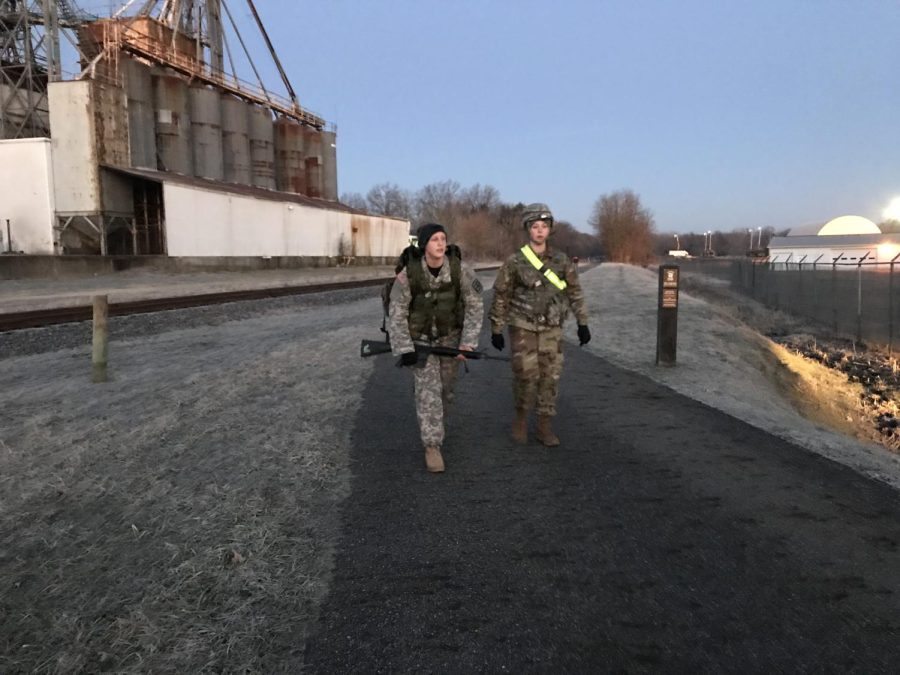Army ROTC takes on 6 mile ruck march
March 8, 2020
Before the sun rises, ROTC Army members gather together and prepare for what they call a ruck march. Starting at 5:00 a.m., members must be ready for what is to come with broken-in boots, two or more layers of socks and extra hats.
The ruck march is a full uniform march, or run, with a backpack (called a ruck) that weighs 35 to 45 pounds, depending on the person. The ruck distance varies based on the team that is marching and can be three, six, nine or 12 miles. Some cadet members are assigned a role to monitor the ruck, including the road guards, the fallout crew, the leaders and the medic.
There are two kinds of ruck marches: the formation, which is where everyone marches together and the release, where people march at their own pace. During the release, some members walk slower than others, which causes some issues because the group disperses and it is harder to monitor everyone as a whole.
Starting out in complete darkness, the Army ROTC does not wait for the sun to come out at all. Kyle Raynard, a senior cadet, marches forward with heavy breaths and footsteps as he leads the ruck and finishes it within an hour.
“It’s kind of hard to get the blood flowing when it’s under 32 degrees,” Christopher Harris, a senior cadet, said. “However, once you start to get going, it’s nice and things start to go a little bit numb.”
Road guards stand along the street, making sure members don’t get run over by cars. They’re standing at the turning point, which is the halfway point for members to reach and walk back. A sigh of relief comes out when the road guards are in sight since it shows that their march is at least halfway done.
At the end of the trail are the medics and the fallout crew, making sure everyone is on track and no one is left behind. While it is important to challenge themselves, safety is always a priority.
Although the march includes a lot of mental preparation, it requires a lot of physical strength as well, especially in the lower back, calves and legs. This is not something people can easily walk through; they must train for it.
Bridget Lin covers ROTC and military. Contact her at [email protected].

























